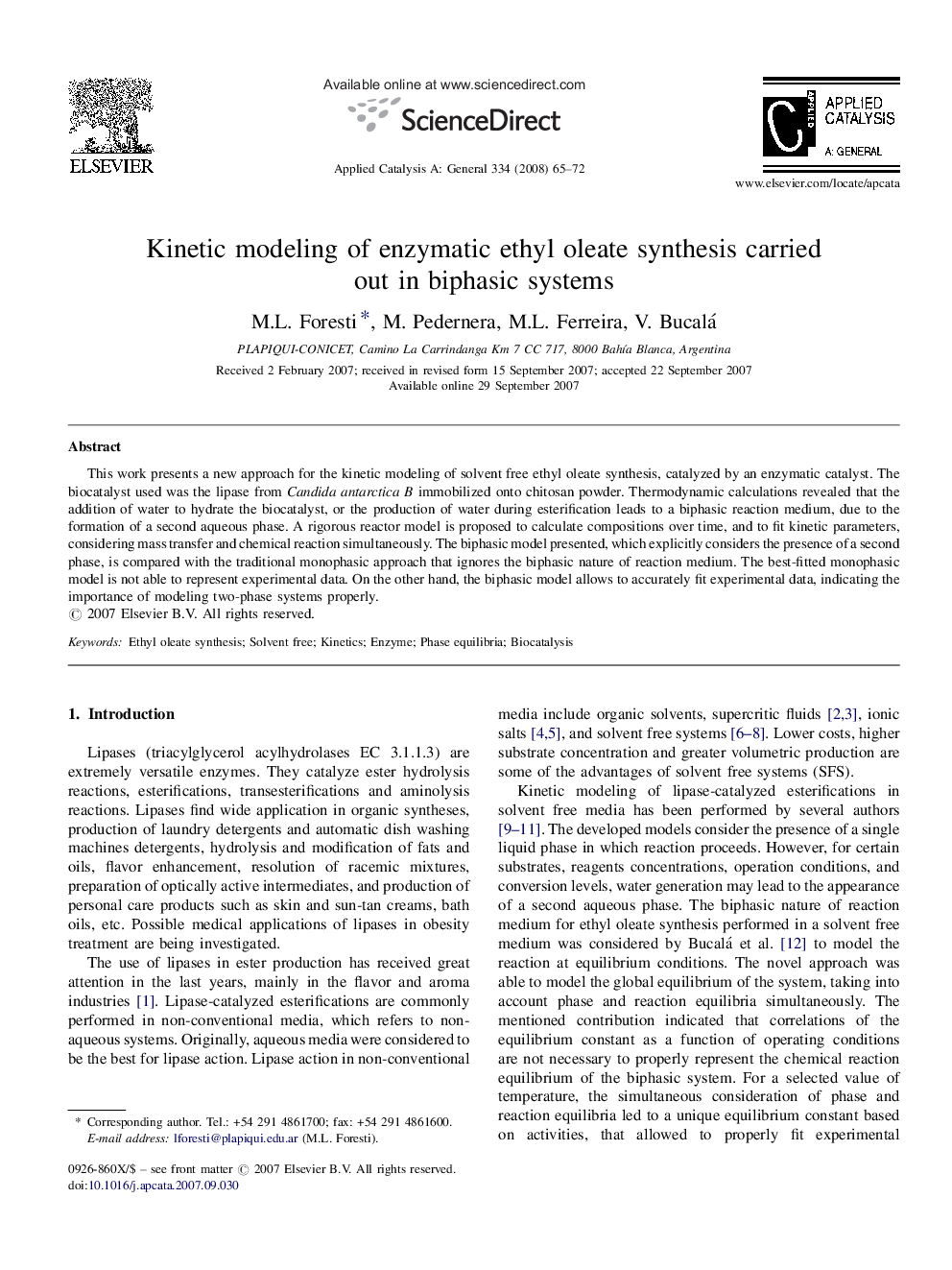| Article ID | Journal | Published Year | Pages | File Type |
|---|---|---|---|---|
| 43192 | Applied Catalysis A: General | 2008 | 8 Pages |
This work presents a new approach for the kinetic modeling of solvent free ethyl oleate synthesis, catalyzed by an enzymatic catalyst. The biocatalyst used was the lipase from Candida antarctica B immobilized onto chitosan powder. Thermodynamic calculations revealed that the addition of water to hydrate the biocatalyst, or the production of water during esterification leads to a biphasic reaction medium, due to the formation of a second aqueous phase. A rigorous reactor model is proposed to calculate compositions over time, and to fit kinetic parameters, considering mass transfer and chemical reaction simultaneously. The biphasic model presented, which explicitly considers the presence of a second phase, is compared with the traditional monophasic approach that ignores the biphasic nature of reaction medium. The best-fitted monophasic model is not able to represent experimental data. On the other hand, the biphasic model allows to accurately fit experimental data, indicating the importance of modeling two-phase systems properly.
Graphical abstractIn the lipase-catalyzed solvent free esterification of oleic acid and ethanol thermodynamic calculations revealed that the addition of water to hydrate the biocatalyst, or the production of water during reaction leads to a biphasic reaction medium, due to the formation of a second aqueous phase. An rigorous reactor model is proposed to calculate compositions over time, and to fit kinetic parameters, considering chemical reaction and mass transfer between both liquid phases simultaneously.Figure optionsDownload full-size imageDownload as PowerPoint slide
